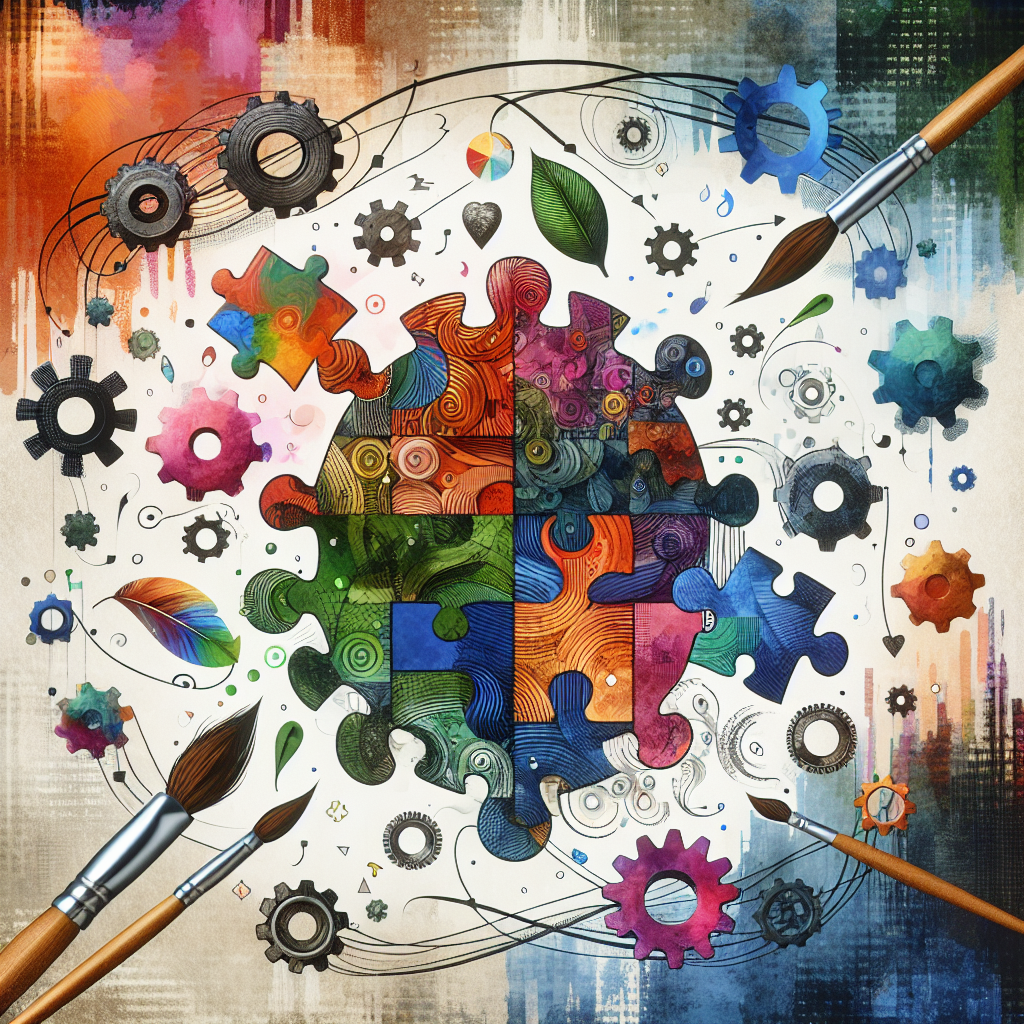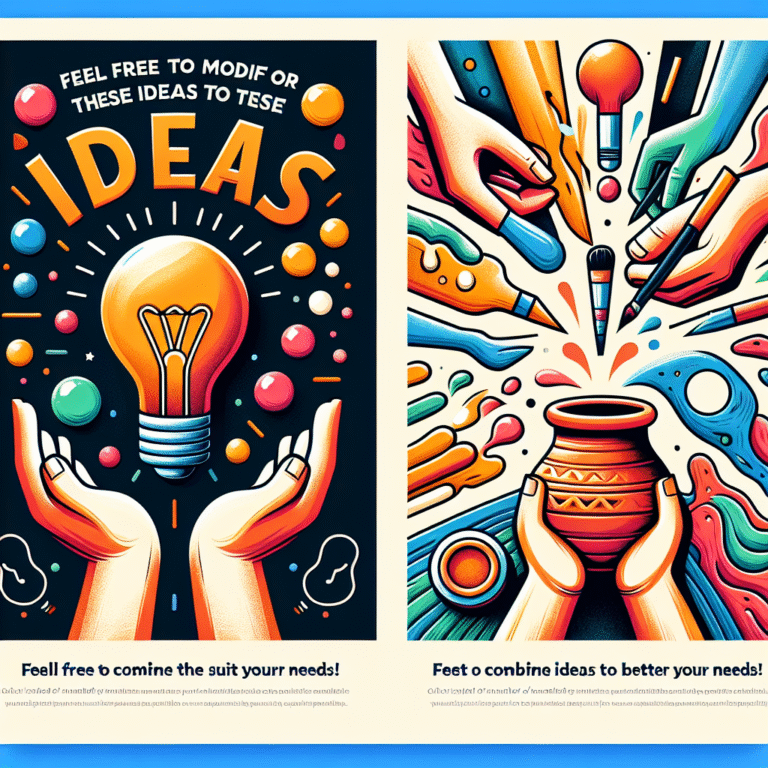
Introduction
In the ever-evolving world of design, marketing, and personal expression, the ability to "feel free to mix and match elements or modify them to better suit your needs!" has become an essential skill. Whether you’re designing a website, crafting a marketing strategy, or even rearranging the furniture in your living room, the capacity to blend different elements creatively can lead to exceptional results. This article will delve into how this approach can enhance your outcomes and provide you with unique insights, strategies, and case studies that exemplify its value.
Why Mixing and Matching Matters
In a world brimming with choices, understanding how to blend various elements effectively is crucial. Not only does it foster creativity, but it also allows for personalized solutions that resonate with specific audiences. As consumer preferences shift, the ability to adapt becomes indispensable.
Navigating the Landscape of Flexibility
The phrase "feel free to mix and match elements or modify them to better suit your needs!" encapsulates a mindset that encourages experimentation. This flexibility can be applied in various contexts:
- Design and Aesthetics: Interior design, graphic design, and fashion.
- Marketing Strategies: Content, social media posts, and advertising.
- Personal Development: Customizing learning methods and skill sets.
The Art of Combining Elements in Design
Case Study: The IKEA Effect
IKEA has mastered the concept of mixing and matching in furniture design. Their modular furniture allows customers to select varying components, creating unique designs that appeal to their tastes and needs. This strategy doesn’t just increase consumer satisfaction; it also enhances the perceived value of ownership. Table 1 shows the elements of IKEA’s design philosophy.
| Design Element | Description |
|---|---|
| Modularity | Items can be combined in various ways to create a customized look. |
| Simplicity | Minimalist designs that appeal to various styles, making them versatile. |
| Affordable | Lower price points encourage experimentation. |
Enhancing Your Design Projects
Feel free to mix and match elements or modify them to better suit your needs! Start with a core concept, and layer on components that reflect your aesthetic preferences. For instance, in web design, using a combination of color palettes, typography, and layout styles can create a stunning visual experience.
Practical Tips for Design
- Mood Boards: Create mood boards that mix different design elements. This helps visualize how various components work together.
- User Feedback: Utilize A/B testing to see which combinations resonate most with users.
- Iterate: Don’t be afraid to modify elements after gathering user data.
Tailoring Marketing Strategies
Case Study: Nike’s Personalized Approach
Nike adopts a compelling strategy that exemplifies the idea behind mixing and matching. Their “Nike By You” service allows customers to customize shoes by choosing colors, materials, and even printing personal messages. This individualized approach enhances customer engagement and loyalty, demonstrating that "feel free to mix and match elements or modify them to better suit your needs!" can lead to significant competitive advantages.
Key Marketing Insights
- Segment Your Audience: Different consumers thrive under different strategies. Segment your audience and tailor your messaging accordingly.
- Experiment with Content: Mix blog posts, videos, and infographics to see what feels right for your brand.
Data-Driven Decision Making
Table 2 outlines some critical points for marketers to consider when mixing and matching elements.
| Strategy | Recommendation |
|---|---|
| Content Types | Test different formats (videos, blogs) for engagement. |
| Targeting | Experiment with targeted ads based on demographic data. |
| Social Media | Mix content between promotional posts and community-focused updates. |
The Personalized Learning Paradigm
In education, the capacity to "feel free to mix and match elements or modify them to better suit your needs!" has led to better engagement and retention rates.
Case Study: Online Learning Platforms
Platforms like Coursera and Skillshare allow users to select courses and modules that align with their interests and needs. This freedom of choice empowers learners to follow a path that resonates with them, thus enhancing their educational experience.
Empowering Learners
- Adaptive Learning Technologies: Utilize platforms that adapt to individual learning styles.
- Flexible Curricula: Create curricula that allow students to choose projects that matter to them.
Benefits of Personalization
Table 3 provides statistics on user engagement through personalized learning experiences.
| Element | Engagement Improvement (%) |
|---|---|
| Customization | 25% |
| Flexibility | 30% |
| Interactive Content | 40% |
Bridging Design, Marketing, and Education
Finding Common Threads
Across design, marketing, and education, a clear theme emerges: personalization leads to better outcomes. Feel free to mix and match elements or modify them to better suit your needs! by approaching challenges through a lens of flexibility and creativity can yield impressive results.
Key Takeaways
- Experimentation is Key: Don’t hesitate to try new combinations.
- Collect Feedback: Always be prepared to adapt based on results.
- Stay Innovative: The landscape is continuously evolving; keep your strategies fresh.
Conclusion
In today’s fast-paced environment, the ability to "feel free to mix and match elements or modify them to better suit your needs!" is not just desirable—it’s essential. By harnessing the power of flexibility and personalization, you can create designs that resonate, marketing strategies that engage, and educational experiences that empower.
Motivational Takeaway
Remember that creativity is boundless. Often, the most remarkable innovations and designs arise from the simple act of combining elements in ways we haven’t considered. So, embrace the flexibility of your journey!
FAQs Section
1. What does "mix and match" mean in a practical sense?
"Mix and match" refers to the practice of combining different elements (like design components, marketing techniques, etc.) to create something unique and tailored to specific needs.
2. How can I apply this concept in my business?
By analyzing your audience and understanding their needs, you can mix and match marketing strategies, product offerings, or design elements to better engage them.
3. Is there a risk in mixing too many elements?
Yes, overcomplicating designs or strategies can lead to confusion. It’s essential to find a balance and prioritize clarity.
4. How can consumer feedback inform my mixing and matching process?
Consumer feedback can provide insights into what elements resonate most with your audience, allowing you to tailor your approach more effectively.
5. Can mixing and matching work in a team setting?
Absolutely! Collaborative brainstorming sessions can yield powerful combinations of ideas and elements that can enhance creativity and productivity.
As you navigate your journey, always feel free to mix and match elements or modify them to better suit your needs! The limits are only what you set.














